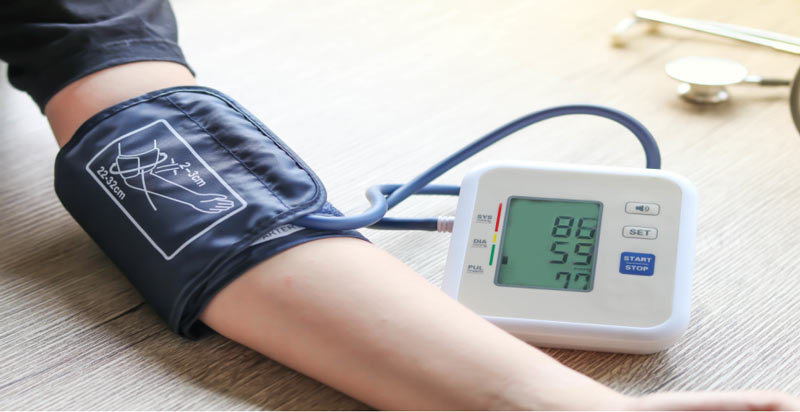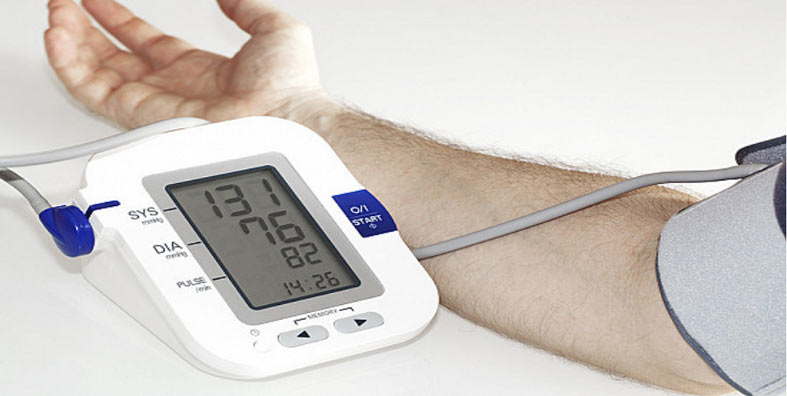Do you know the best time to measure your blood pressure? It's an important question for anyone who needs to monitor their health, but there can be a more complex answer. Although most medical providers take blood pressure readings when the patient arrives in the office, that may only be ideal for some.
In this blog post, we explore when it is best to take your blood pressure reading, taking into account factors such as home environment and stress levels throughout the day. We also examine how often measurements should be taken and which type of monitor works best for accurate readings. Read on to learn more about ensuring you get an accurate assessment of your body's vital signs!
When to Take Your Blood Pressure
When determining the best time to take your blood pressure reading, it is important to consider factors such as your home environment and stress levels throughout the day. Taking a measurement when you feel relaxed and in a calming environment can help you get an accurate reading. Understanding how often measurements should be taken for optimal accuracy is also important.
Ideally, the most accurate reading is taken when you are in a quiet and comfortable atmosphere. Avoid measuring if you have been engaging in physical activity or have consumed caffeine or alcohol within the past 30 minutes. Take your measurements simultaneously daily, as blood pressure fluctuations occur throughout the day.
In the Morning
It is best to take your blood pressure in the morning. This is because our bodies experience fluctuations throughout the day, and taking a measurement when you are relaxed can provide an accurate reading. Additionally, stress levels are lower in the morning, which helps achieve a more accurate reading. It is important to note that if you take medications for blood pressure or any other condition, you should take them before measuring your blood pressure.
If you are on a regular medication regimen, measuring your blood pressure simultaneously daily is important to ensure consistent results. Ideally, measurements should be taken first thing in the morning after waking in the bathroom. Try to only move around a little before measuring your blood pressure, as this can interfere with the accuracy of the reading.
It is also important to remember that reading in the morning may be slightly higher due to natural fluctuations in our body’s physiology, such as increased heart rate and cortisol levels. If your body monitors your health, recording all readings (morning and evening) is best rather than relying on just one measurement.
In the Afternoon
Taking your blood pressure in the afternoon is another important way to monitor your health. This is because our bodies experience numerous fluctuations throughout the day, and taking a measurement when you are relaxed can provide an accurate reading. Additionally, stress levels may be higher in the afternoon, so it is important to take a few moments to relax before measuring optimal accuracy.
In the Evening
Taking your blood pressure in the evening is also important. This is because our bodies experience numerous fluctuations throughout the day, and taking a measurement when you are relaxed can provide an accurate reading. Also, stress levels may be highest in the evening, so it is important to take a few moments to relax before measuring for optimal accuracy.
It is important to note that if you are on any medications for your blood pressure or any other condition, it is best to take them at their scheduled time and then measure your blood pressure after about 30 minutes. Taking a measurement right after medication might cause inaccurate results due to temporary drops in blood pressure levels caused by the medication. It is also best to avoid eating or drinking caffeine before taking measurements, as this can interfere with accuracy.
Advantages of Home Blood Pressure Monitoring
1. Convenience
Home blood pressure monitoring is convenient as you can take readings in the comfort and privacy of your home without making a doctor’s appointment. Additionally, many monitors now come with a smartphone, a doctor allowing you to track your results over time.
2. Comfort
Taking readings at home eliminates any stress associated with visiting the doctor’s office, which can interfere with getting accurate results.
3. Doctor
Home monitors are often more cost-effective than taking multiple trips to the doctor for measurements.
4. Improved Accuracy
Taking regular readings at home allows you to identify any spikes or drops in blood pressure levels quickly and accurately over time, allowing for timely treatment if needed.
5. Reduced Anxiety
Home monitoring can reduce anxiety around not knowing your blood pressure numbers by providing more consistent readings over time.
6. Increased Control
Having a home monitor gives you more control over your health, allowing you to take readings at your convenience and talk to your doctor as needed.
7. Increased Awareness
Regular home-monitoring increases awareness of changes in blood pressure levels, which can aid in the early detection of potential issues.
8. Peace of Mind
Knowing that you are taking proactive steps toward measuring and managing your health is a great source of peace for many people.
Interpreting Your Blood Pressure Readings
As with any medical test, it is important to understand the results of your blood pressure readings. Normal blood pressure readings should be around 120/80 mmHg (systolic/diastolic). If your readings are consistently above 140/90 mmHg, you may have high blood pressure or hypertension and should speak to a doctor about treatment options.
It is also important to note that if you experience sudden spikes in your numbers or persistently elevated levels can indicate a more serious underlying issue and should not be ignored. Home monitoring provides an easy and accurate way to track your numbers over time so that any changes can be caught quickly and dealt with swiftly.
FAQs
Q: How often should I measure my blood pressure?
A: The frequency you measure your blood pressure depends on how accurately you need to know this information for medical purposes or simply for general health tracking. For most people, checking their BP twice a day is sufficient. However, if you have a history of hypertension, taking readings three or four times a day may be beneficial, depending on what your doctor recommends.
Q: What kind of monitor should I use?
A: When selecting a blood pressure monitor for home use, choosing one that meets the American Heit'sAssociation (AHA) standards is important. A good quality device should be accurate and portable enough for easy transport. Additionally, many monitors come with features like memory recall so that you can keep track of your BP readings over time. Talk to your doctor about which type of monitor would work best for you.
Q: Are there any lifestyle changes I should make to improve my blood pressure?
A: Yes! Making healthy lifestyle choices can have a big impact on your blood pressure. Eating more fresh fruits and vegetables, engaging in regular physical activity, avoiding processed foods and excess sodium, reducing stress, and maintaining a healthy weight are all excellent ways to help keep your BP under control. Talk to your doctor for personalized advice on making these changes part of your daily routine.
Conclusion
It’s important to know when and how often you should measure your bloIt'sressure. Taking accurate readings at home can help you better manage your overall health and detect any problems sooner. Make sure to use a good quality monitor that meets the standards set by the AHA, and don’t forget about lifestyle modifications like eating healthier and getting don't exercise – these changes can make a big difference in helping maintain healthy BP levels!





